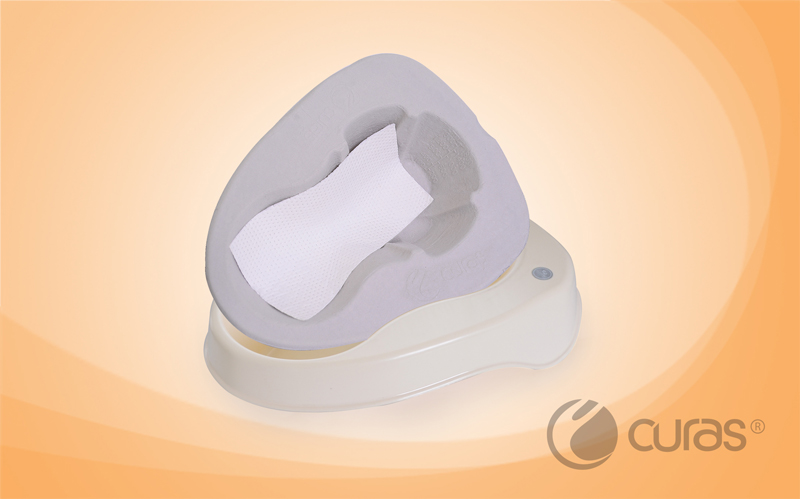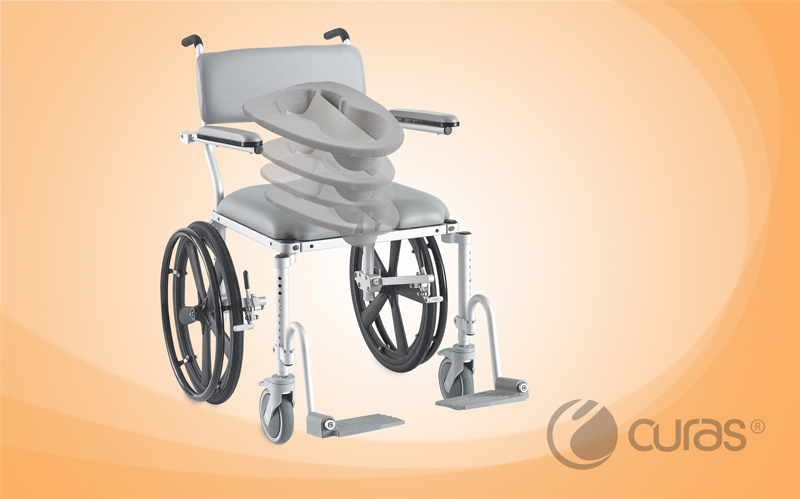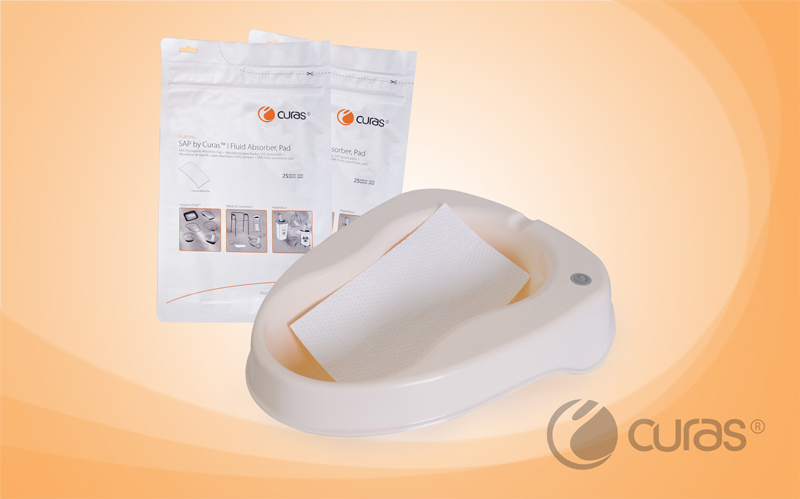05 October 2019
With the latest product, REF 09602, a larger-than-normal SAP Pad (for body fluid control); is the successful range of SAP by Curas been further improved.
The super absorbent pad (SAP by Curas™) is designed to meet multiple clinical objectives, such as:
- An insert in a bedpan, to prevent urine spraying and staining with the risk of causing aerosol contamination risks.
- An insert in a slipper pan, to prevent human waste being dislocated during difficult use & removal efforts.
- An insert in a sharps & needles container, to absorb harmful liquids and thus avoiding spills or evaporation of liquids.
- An insert in female medical pulp and plastic urinal bottles, the lower edges makes spills and accidents more likely during use.
- An absorption pad in the case of bed-spills, floor spills etc.
- Added to a larger volume of wash-water (basin), following a medium to high risk bed bathing procedure.
The SAP by Curas™ is available in all markets where Curas is represented and we welcome your enquiry – please write to us This email address is being protected from spambots. You need JavaScript enabled to view it.



March 2019
This [ ] is about the potential for harm if a patient ingests Vernagel (or SAP by Curas, ed.).
A report received by the NPSA reads:
"A patient put the Vernagel (or SAP by Curas, ed.) gel sachet into his mouth and the crystals swelled in his mouth; he was trying to pick them out but was having difficulty in breathing. Staff used suction to assist in clearing his mouth."
Vernagel (or SAP by Curas, ed.) is a super absorbent, odourless white granular powder that is used to prevent spillages by solidifying liquids, in particular body fluids. In so doing the gel helps to avoid spillages of urine when bedpans or bottles are taken from patients and makes it more convenient and easy to dispose of. It is common practise in some care settings to place sachets of Vernagel (or SAP by Curas, ed.) in urine bottles so that the sachets of powder are already in the bottle when a patient uses it. When the patient urinates into the bottle the sachet dissolves thus releasing the granular powder to react with the fluid and to solidify it.
A search of all incidents reported to the (NHS, ed.) National Reporting and Learning System (NRLS) from inception to May 2011 found 13 reports where patients had attempted to eat or swallow the substance. Two such reports resulted in the patient being transferred for specialist urgent care. A number of the incident reports stated or implied that the patient was confused or suffered a degree of cognitive impairment. To such patients the sachet may well be mistaken for a sachet of sugar or salt.
Although the product is non-toxic by the oral route there is the potential for it to be activated by oral secretions and the gel could obstruct the patient's airway.
Organisations should ensure that the instructions in the products' data sheet are adhered to and that particular attention is paid to risk assessing its use in relation to individual patient/ client needs.
Whilst this [ ] specifically refers to Vernagel (or SAP by Curas, ed.), organisations should also consider other substances which may harm patients if ingested, e.g. alcohol hand gel that patients may have access to.
Note: [ ] are notifications of key risks emerging from review of serious incidents reported to the NRLS and shared by the NPSA.
Article via NHS (http://www.nrls.npsa.nhs.uk/resources/?Entryld45=132835)
Issue Date: 29 September 2011, Ref. No. 1324
